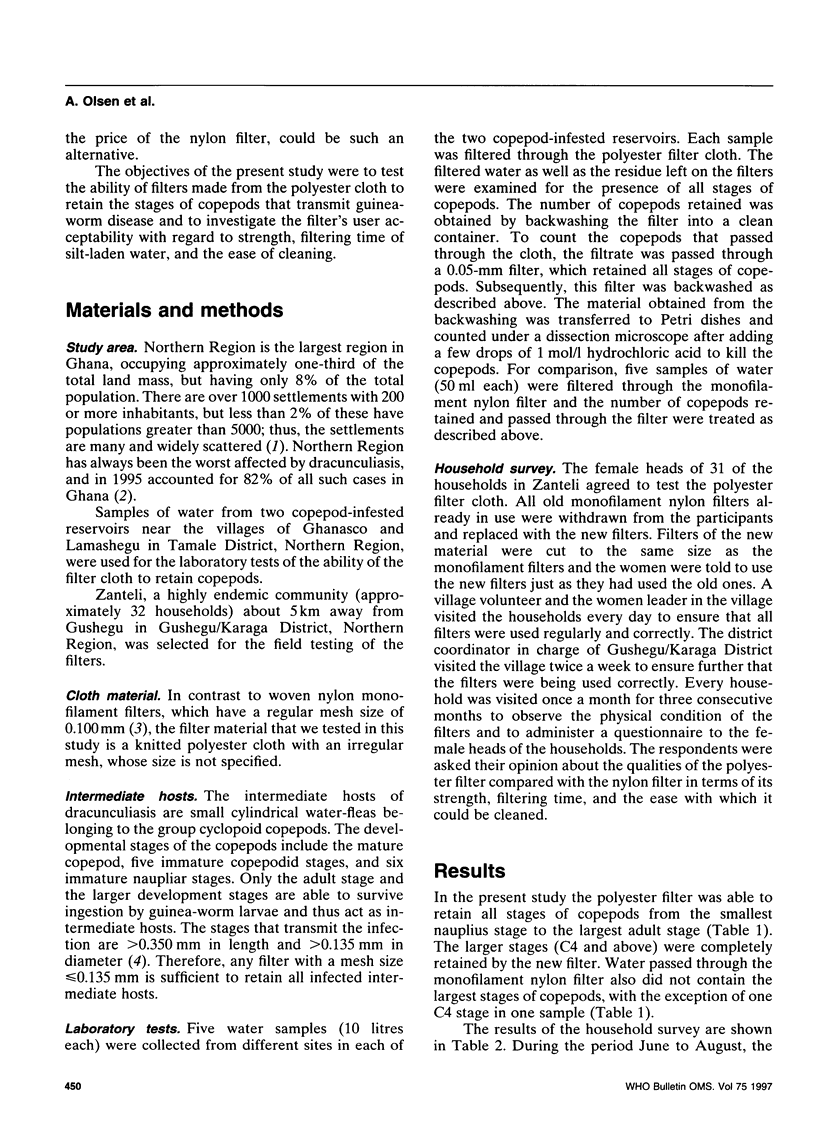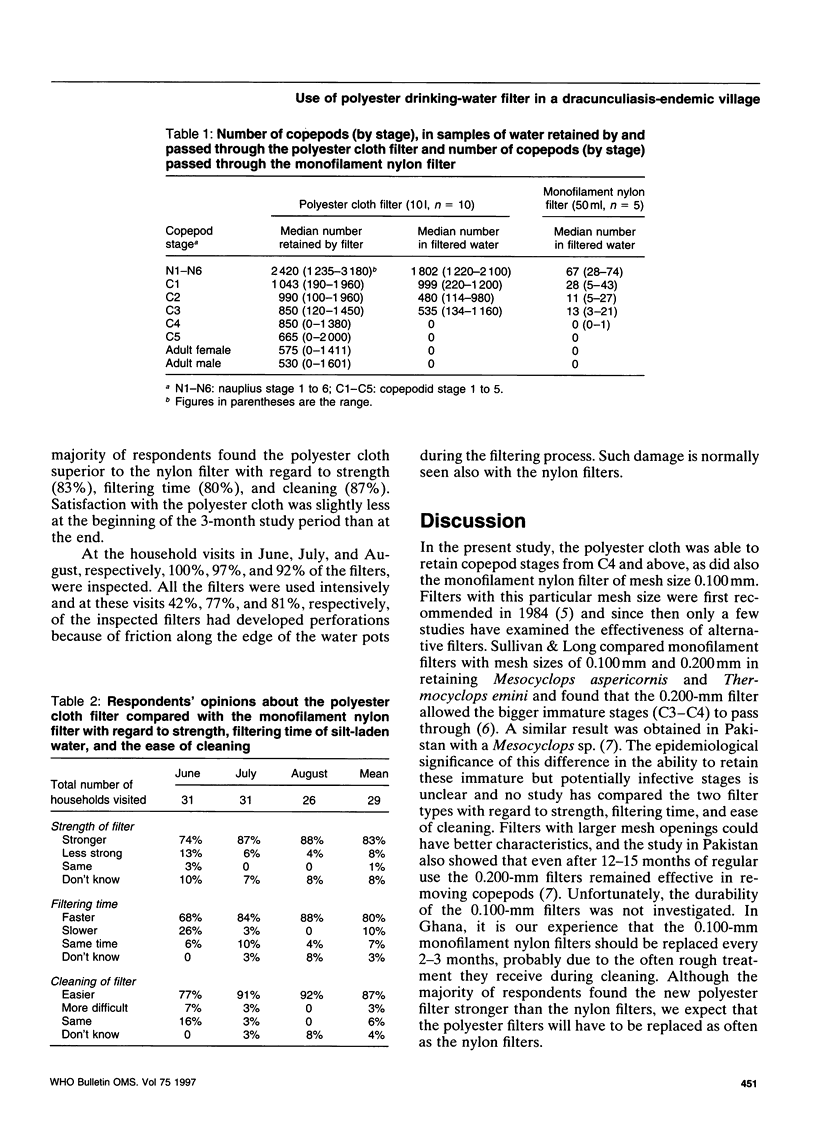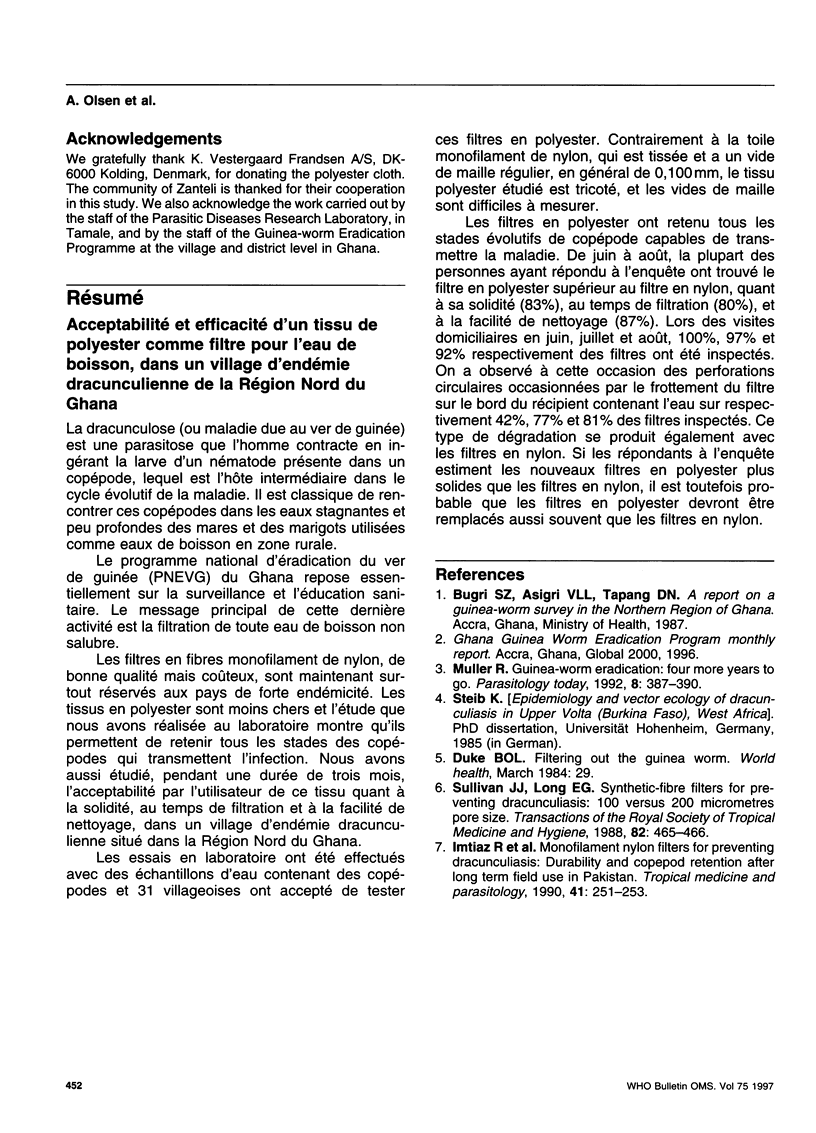Abstract
In the global effort to eradicate dracunculiasis (guinea-worm disease) one of the main tools is the use of filters for filtering unsafe drinking-water. The expensive and high-quality monofilament nylon filters, which for many years were donated to all dracunculiasis-endemic countries, are now mainly reserved for highly endemic countries. Polyester cloth is less expensive, and we investigated the user acceptability and effectiveness of this material as a drinking-water filter in a dracunculiasis-endemic village in Northern Region, Ghana, over a 3-month period. The polyester cloth completely retained the stages of copepods that are responsible for transmitting dracunculiasis. Over the 3-month study period a majority of respondents found that the new cloth was superior to the nylon filter with regard to strength (83%), filtering time (80%), and the ease with which the filter could be cleaned (87%). Inspection revealed that the filters were used intensively and that the new cloth was damaged after 2-3 months of use, which is also the case for the monofilament nylon filters.
Full text
PDF



Selected References
These references are in PubMed. This may not be the complete list of references from this article.
- Muller R. Guinea worm eradication: four more years to go. Parasitol Today. 1992 Nov;8(11):387–390. doi: 10.1016/0169-4758(92)90178-5. [DOI] [PubMed] [Google Scholar]
- Sullivan J. J., Long E. G. Synthetic-fibre filters for preventing dracunculiasis: 100 versus 200 micrometres pore size. Trans R Soc Trop Med Hyg. 1988;82(3):465–466. doi: 10.1016/0035-9203(88)90164-2. [DOI] [PubMed] [Google Scholar]


